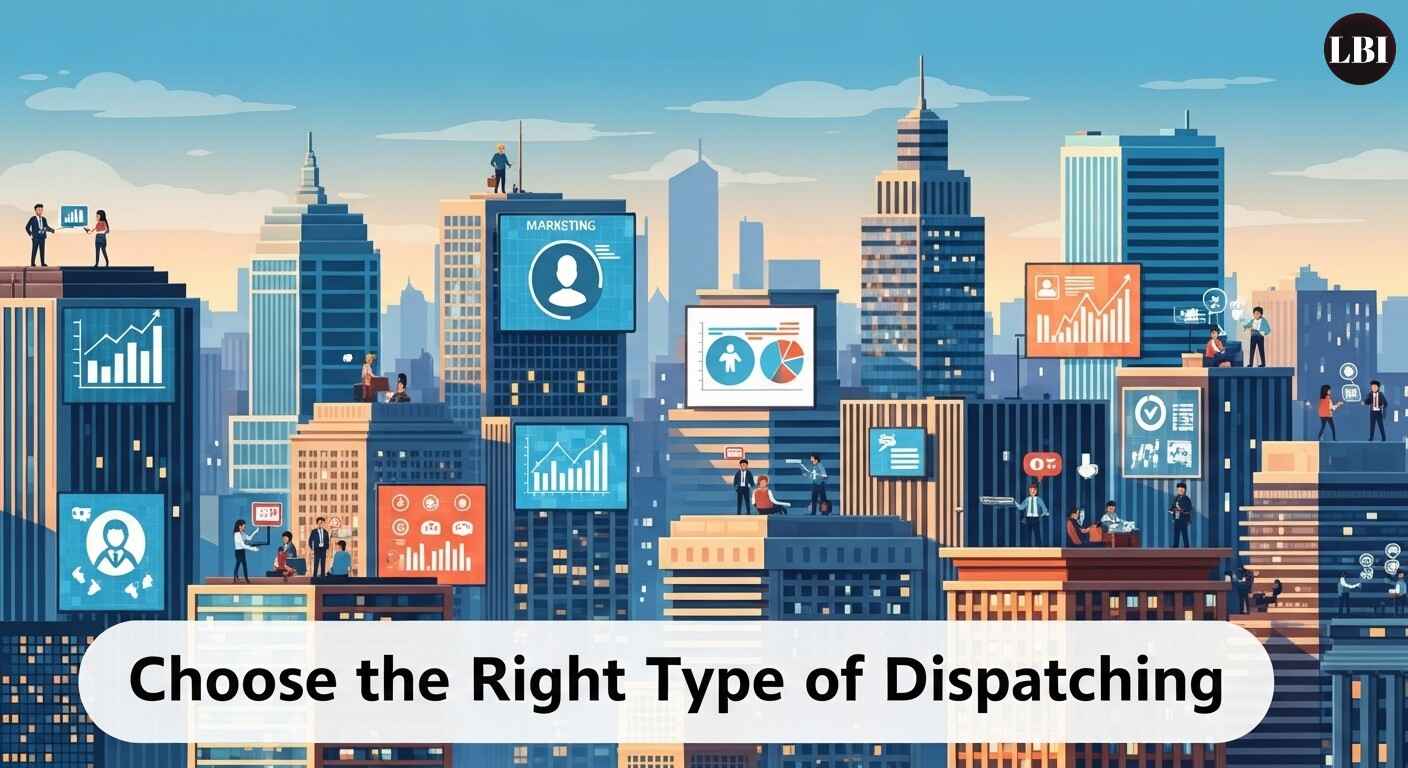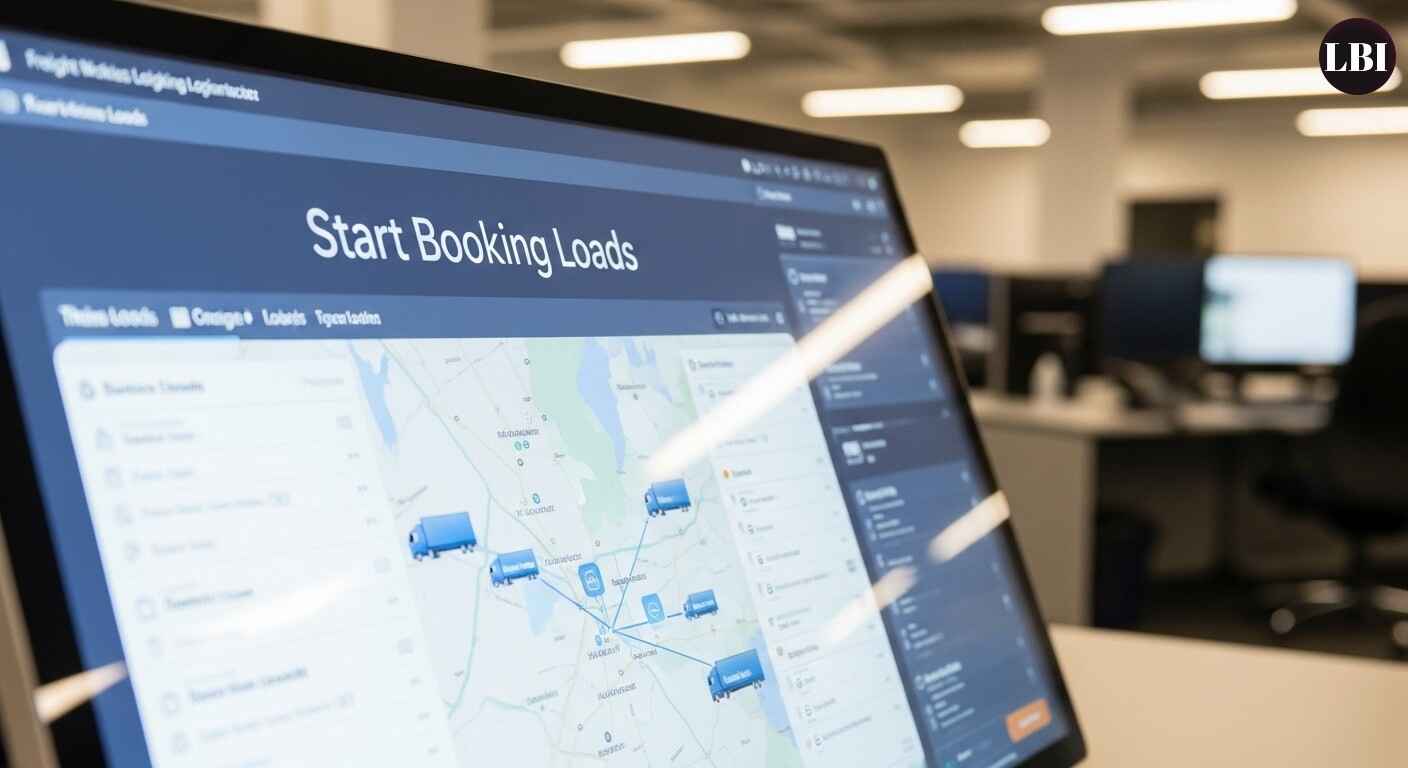Introduction
Thinking about how to start a dispatching company in 2025? You’re not alone. With the growing demand for shipping services and the rise of independent truck drivers, starting a dispatching company has become one of the most innovative business moves this year. The best part? You don’t need a truck, a fancy office, or a logistics degree to get started.
All you need is a laptop, internet, and the drive to succeed.
This handbook will guide you through precisely how to begin a dispatching business, from learning how to work as a dispatcher to establishing your office, acquiring clients, and expanding your business. Whether you have the goal to create a side business from your kitchen desk or expand into a full-time logistics consultant, this handbook is your ideal starting point.
Step 1: Understand What a Dispatcher Does
 Before you get in, you have to know what you’re getting yourself into. A freight dispatcher assists truck drivers in securing loads and maintains their schedules in order. You’ll be the one looking for freight, calling brokers, negotiating rates, and ensuring the paperwork is done. It’s like having the driver’s assistant but for the road.
Before you get in, you have to know what you’re getting yourself into. A freight dispatcher assists truck drivers in securing loads and maintains their schedules in order. You’ll be the one looking for freight, calling brokers, negotiating rates, and ensuring the paperwork is done. It’s like having the driver’s assistant but for the road.
Dispatchers don’t just sit behind a screen. They solve problems, manage loads, and keep everything moving. If a driver is delayed or a broker drops the ball, you’re the one who steps in to fix it.
You’ll be communicating with:
- Owner-operators (independent drivers)
- Freight brokers
- Shippers
- Load board providers
If you’re good at talking to people, solving problems, and staying organized, you already have what it takes.
Step 2: Choose the Right Type of Dispatching
 Not all dispatching work is the same. You need to pick the right lane literally and figuratively.
Not all dispatching work is the same. You need to pick the right lane literally and figuratively.
The most common types of dispatching:
- Freight Dispatching: This is what we’ll focus on. You help truck drivers find loads and coordinate trips.
- Emergency Dispatching: Think police, ambulance, and fire services. (This requires special training and is an entirely different field.)
Freight dispatching gives you the freedom to work remotely and set your hours. It’s perfect for new entrepreneurs who want flexibility and control.
Step 3: Learn the Industry—No Degree Needed
 You don’t need a college diploma to start dispatching, but you do need to understand how the freight world works.
You don’t need a college diploma to start dispatching, but you do need to understand how the freight world works.
Key things to learn:
- Load Boards: These are websites where brokers and shippers post loads. Dispatchers search for available freight and book it for drivers.
- Rate Per Mile (RPM): Truckers are usually paid by the mile. Your job is to find the highest-paying loads to increase your earnings.
- Broker Relationships: Freight brokers connect shippers with carriers. You’ll often talk to brokers to negotiate deals on behalf of your drivers.
How to Learn:
- Watch free YouTube tutorials
- Take low-cost online courses (Udemy, Coursera)
- Join Facebook groups and Reddit forums
- Follow industry news and blogs
Aim to learn how the load process works from pickup to delivery, including what paperwork is involved.
Step 4: Make It Legal — Register Your Business
 To operate professionally, you’ll need to register your dispatching business.
To operate professionally, you’ll need to register your dispatching business.
Here’s how:
- Pick a Business Name — Something easy to remember and professional.
- Choose Your Business Structure — Most dispatchers start as an LLC (Limited Liability Company). It protects your assets.
- Get an EIN (Employer Identification Number) — This is free from the IRS and allows you to open a business bank account.
- Open a Business Bank Account — Keep your business and personal finances separate.
- Check Local License Requirements — Some states or cities may require a general business license.
You can register your LLC online through services like LegalZoom or your state’s website. It usually takes just a couple of hours.
Step 5: Set Up a Simple Home Office
 You don’t need a big fancy office. You can start your dispatching company right from your kitchen or bedroom.
You don’t need a big fancy office. You can start your dispatching company right from your kitchen or bedroom.
Must-Haves for Your Office:
- Computer or Laptop (Fast and reliable)
- High-Speed Internet
- Phone Line or Virtual Phone System (Google Voice, Skype, Grasshopper)
- Headset (Hands-free calling with clear audio)
- Printer/Scanner (Optional but helpful for documents)
- Desk and Chair (Stay comfortable, you’ll spend hours here)
Staying organized is key. Use Google Calendar, Trello, or a good old-fashioned notebook to keep track of daily tasks.
Step 6: Get the Right Tools to Run Your Business
 To run your dispatching business efficiently, you need software tools that help you work faster and smarter.
To run your dispatching business efficiently, you need software tools that help you work faster and smarter.
Essential Dispatching Tools:
- Load Boards:
- DAT Load Board
- TruckStop
- 123LoadBoard.
These require a monthly subscription but are essential for finding freight.
- CRM Software (Customer Relationship Management):
- Free options: HubSpot, Zoho CRM
- Track your drivers, loads, and contacts.
- Invoicing Tools:
- QuickBooks
- Wave (Free option)
Helps you send invoices and track income.
- Document Storage & Sharing:
- Google Drive
- Dropbox
Store rate confirmations, bills of lading, and contracts.
Start with free trials to see which tools work best for you before committing to paid plans.
Step 7: Find Your First Truck Driver (Carrier)
 You can’t dispatch without a driver. Your first goal is to find at least one independent trucker who needs help finding and booking loads.
You can’t dispatch without a driver. Your first goal is to find at least one independent trucker who needs help finding and booking loads.
Where to Find Owner-Operators:
- Facebook trucking groups
- LinkedIn and industry forums
- FMCSA carrier directory
- Craigslist ads or Load board ads
Reach out to drivers and offer your service. Many new dispatchers land their first carrier by offering to find a high-paying load for free. Once they see your value, they’ll want to keep working with you.
Step 8: Sign a Dispatcher–Carrier Agreement
 Before you start booking freight for a driver, you need a signed agreement. This contract protects you and explains what you do and how you’ll get paid.
Before you start booking freight for a driver, you need a signed agreement. This contract protects you and explains what you do and how you’ll get paid.
Your Agreement Should Include:
- Your dispatch fee (Usually 5%–10% per load)
- Your responsibilities (Booking loads, paperwork, etc.)
- Payment method and schedule
- Termination clause (How either party can end the agreement)
You can find dispatcher–carrier agreement templates online. Always read carefully and make adjustments that fit your business.
Step 9: Start Booking Loads
 Now the real work begins! With a carrier on board, it’s time to go on the load board and find shipments.
Now the real work begins! With a carrier on board, it’s time to go on the load board and find shipments.
Steps to Book a Load:
- Log in to your load board (like DAT)
- Search by origin, destination, and equipment type
- Call brokers directly to ask about load details
- Negotiate the pay rate
- Confirm the load with the broker
- Send the load details to your carrier
- Email the necessary documents (rate confirmation, broker agreement)
Once the carrier delivers the load, you help make sure they get paid by sending invoices and following up with brokers if needed.
Step 10: Build Strong Relationships and Grow
 The dispatching business is all about trust. If your carriers trust you, they’ll stay with you and recommend you to others.
The dispatching business is all about trust. If your carriers trust you, they’ll stay with you and recommend you to others.
Tips to Grow:
- Be Reliable: Always answer your phone and respond quickly.
- Be Transparent: Don’t hide fees or play games.
- Add Services: As you grow, offer extras like billing support, factoring help, or compliance assistance.
- Hire Help: Once you manage a few carriers, you can train another dispatcher and scale.
Many successful dispatching companies started with one person and one truck. With consistency and care, you can turn this into a six-figure business.
Conclusion
Opening a dispatching business in 2025 can be your key to liberty, mobility, and wealth-building. You don’t require a trucking history or several thousand dollars. What you require is the heart to learn, the proper tools, and the work ethic to secure clients.
Start small. One carrier. One load. Build your reputation, stay consistent, and treat people right.
If you’ve been wondering how to start a dispatching company, the answer is simple: Start today. Register your business, set up your tools, and find your first client. The road to success is wide open, and it’s waiting for you.
FAQs About How to Start a Dispatching Company in 2025
1. Do I require a license to begin a dispatching company?
No special dispatcher’s license is necessary. But you must legally register your business and, in some states, obtain a general business license.
2. What does it cost to begin?
Plan on investing $500–$1000 to get started. That covers registration, building out with the basics, and your initial month of software.
3. How much money can I make?
New dispatchers typically make $1,000–$5,000/month initially. As you continue to add carriers, your income can reach $10,000/month or more.
4. Can I do this part-time?
Yes. Many begin dispatching in the evenings or on weekends before going full-time.
5. What if I don’t have any trucking experience?
That’s not a problem. Lots of dispatchers have had different careers beforehand. Provided you are eager to learn and put in effort, you will be okay.

